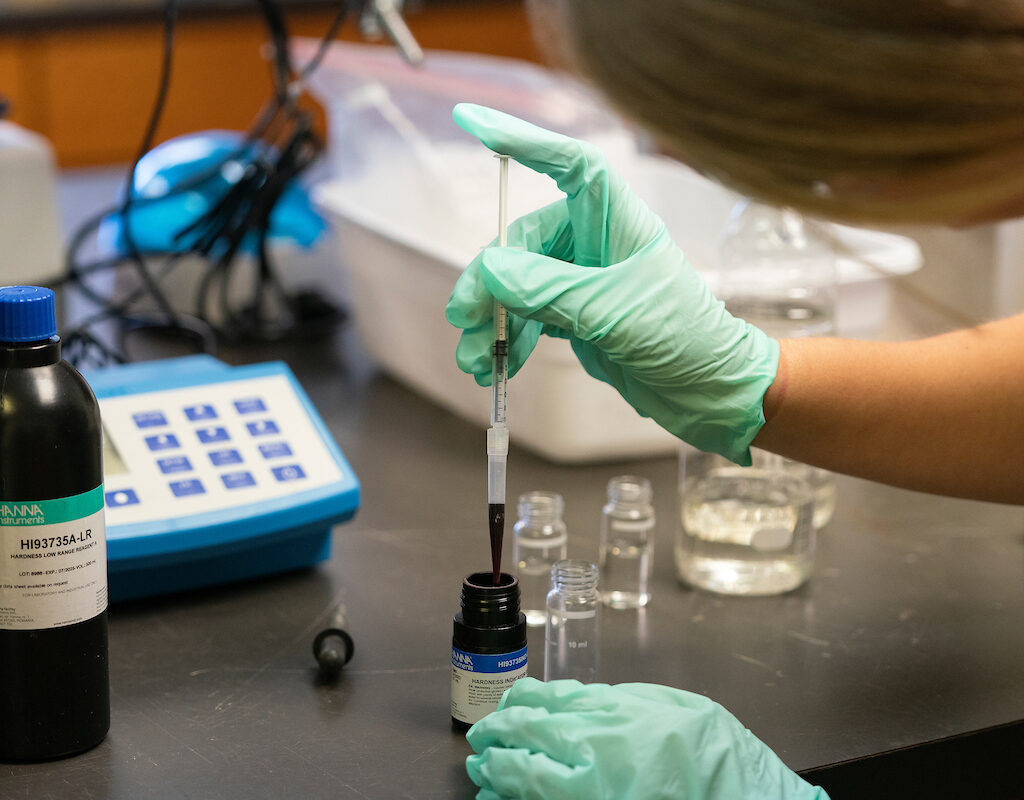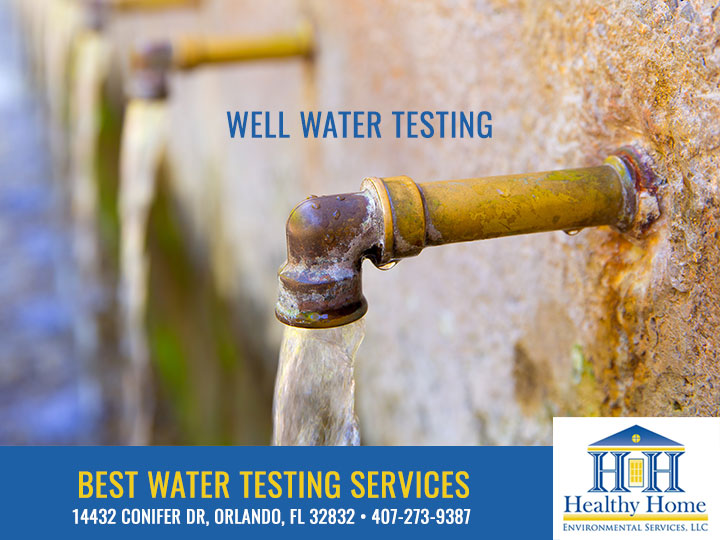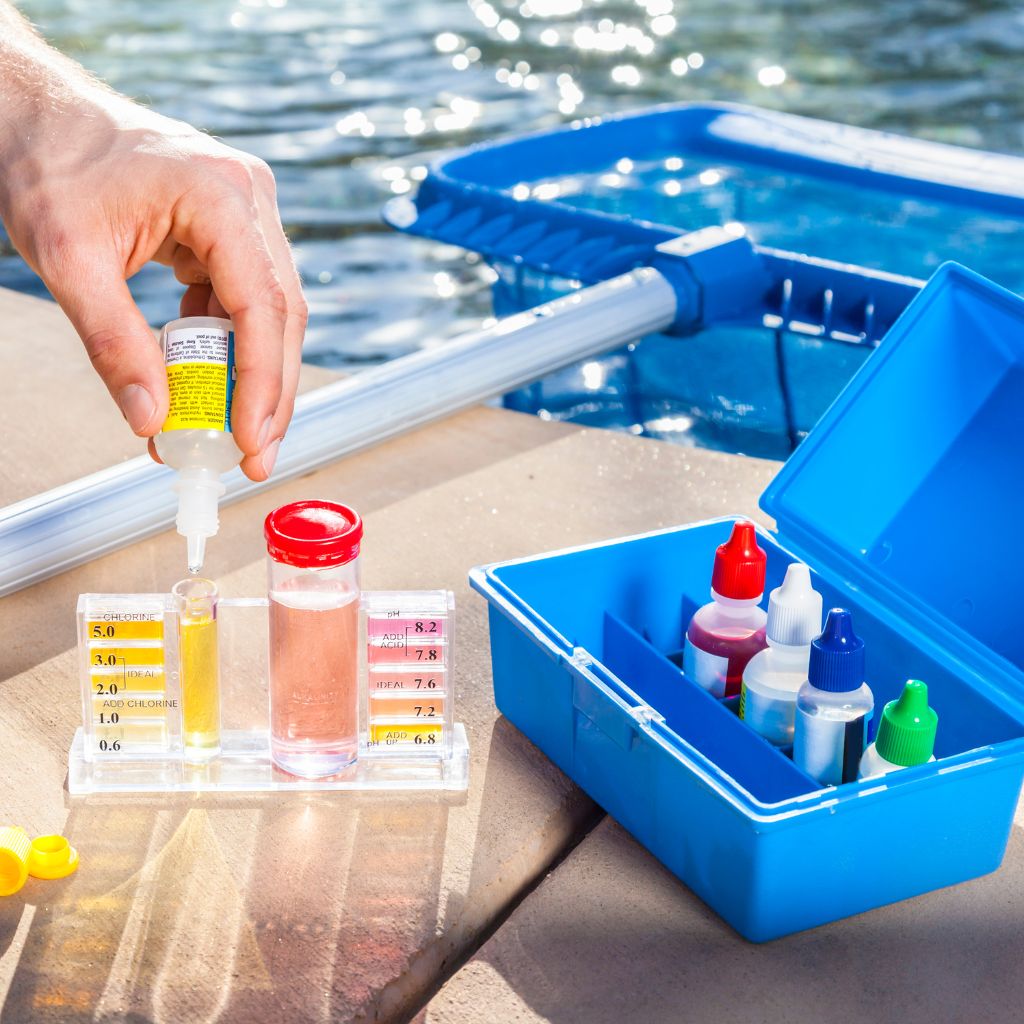Expert Water Testing Services Orlando: Secure Your Water Quality
Expert Water Testing Services Orlando: Secure Your Water Quality
Blog Article
Recognize the Value of Water Screening in Maintaining Conformity With Wellness Standards
In the realm of public health and wellness, comprehending the significance of water testing is vital for preserving conformity with rigid wellness criteria stated by authoritative bodies like the that and EPA. This method works as a frontline defense against the infiltration of dangerous pollutants, varying from microbial pathogens to dangerous chemicals. But what are the specific approaches utilized in water screening, and just how do they make sure that our most vital resource remains unpolluted? As we explore these aspects, the broader effects for regulatory conformity and ecological sustainability begin to unfold, inviting more consideration on this essential subject.
Secret Health Criteria for Water
Making sure the safety and security and top quality of drinking water is vital, as it straight affects public health and wellness. Strict health and wellness requirements are established to protect individuals from waterborne illness and impurities that can cause unfavorable wellness effects. The Globe Health Organization (THAT) and nationwide companies like the Environmental Defense Firm (EPA) in the USA set guidelines and regulative limitations for various physical, chemical, and organic criteria in alcohol consumption water.
These standards are based on comprehensive clinical study and are regularly examined to incorporate new searchings for and technical improvements. Secret criteria consist of microbial impurities such as microorganisms and infections, chemical contaminants like lead and arsenic, and physical qualities such as turbidity and pH levels. Compliance with these standards guarantees that water is devoid of harmful substances and is cosmetically pleasing to the customer.
Water testing plays a critical duty in confirming conformity with these health criteria. Normal tracking and testing assistance identify possible problems before they present a significant wellness danger, enabling prompt treatment and removal. By sticking to these standards, water carriers can maintain public confidence in the security of the area's supply of water, thereby securing public wellness successfully.
Typical Contaminants Detected
When analyzing water quality, what are the most prevalent pollutants that have a tendency to be spotted? Microbial pathogens, including bacteria like Escherichia protozoans and coli such as Giardia and Cryptosporidium, are frequently discovered in water sources, positioning considerable health dangers if ingested.
Chemical pollutants are likewise a primary issue. Nitrates, frequently resulting from agricultural fertilizers, can bring about serious wellness concerns, specifically in babies. Heavy metals such as arsenic, lead, and mercury, generally introduced via commercial discharge or natural mineral deposits, can have long-term harmful effects. Unstable natural substances (VOCs) and pesticides, by-products of farming techniques and industrial activities, more add to water contamination.
Not natural compounds such as fluoride and chlorine, although in some cases intentionally contributed to water for health and wellness benefits, can become problematic at raised degrees. Arising impurities, consisting of pharmaceuticals and individual treatment items, are significantly being identified, elevating concerns regarding their prospective impact on human wellness and ecological communities. Attending to these contaminants is necessary for guarding public health and making certain water top quality compliance.
Methods of Water Testing
Water screening's precision is crucial for determining pollutants and making sure security compliance. Well water testing services. To attain accurate results, numerous methods are employed, each customized to detect specific pollutants and align with regulative requirements. One prevalent technique is spectrophotometry, which gauges the absorption of light by chemical substances in the water, consequently recognizing elements like nitrates and phosphates. This technique is helpful for its sensitivity and specificity.
Chromatography is an additional advanced approach made use of, specifically for organic pollutants. By dividing combinations into individual components, it permits comprehensive evaluation of complex toxins. Gas chromatography and liquid chromatography are generally used versions, each matched for various substance types.
Microbiological screening is crucial for finding pathogens such as germs, infections, and protozoa. Methods such as membrane filtration and multiple-tube fermentation are utilized to society and recognize microbial existence. These methods are crucial in guarding public wellness by making certain microbial safety and security.

Benefits of Routine Screening
Comprehending the various methods of water testing highlights the need of normal screening techniques to maintain water top quality. Normal water screening acts as a proactive step to identify possible pollutants prior to they escalate into significant wellness risks. By continually monitoring water top quality, companies can find toxins such as germs, heavy steels, and chemical residues next early, permitting timely treatments that protect against health and wellness risks and expensive removal efforts.

Moreover, routine testing makes sure that water systems follow well-known health and wellness standards and policies. This compliance is crucial for avoiding lawful charges and maintaining the count on of stakeholders and consumers. Consistent water top quality evaluations help recognize patterns or changes in water make-up, giving important data that can lead operational choices and source monitoring approaches.
Additionally, routine water testing fosters public self-confidence by demonstrating a commitment to safety and security and openness. In fields such as community water food, healthcare, and supply processing, maintaining high water top quality criteria is important to safeguarding public health. Normal testing likewise sustains environmental sustainability by making sure that water sources are taken care of sensibly. In general, the advantages of regular water testing prolong beyond conformity, enhancing operational performance, public security, and environmental stewardship.
Tips to Make Certain Conformity
To ensure conformity with water top quality laws, organizations must apply an organized technique including both preventive and rehabilitative procedures. A comprehensive danger analysis need to be conducted to determine possible contamination resources and vulnerabilities within the water system. This evaluation informs the development of a tailored water management plan that describes certain testing procedures, frequency, and specifications required to fulfill governing criteria.
Succeeding to the planning phase, organizations should develop a routine for normal water screening that follows both regional and nationwide guidelines. Making use of accredited labs guarantees the accuracy and reliability of test outcomes. Any type of discrepancies from appropriate water top quality requirements have to motivate instant rehabilitative activities, such as system cleaning, repair services, or changes in therapy procedures.
Moreover, keeping detailed documents of all screening tasks, results, and corrective actions is important for showing conformity during audits and inspections. Routine training and updates for personnel associated with water administration procedures are critical to guarantee they are mindful of present regulations and finest techniques.
Conclusion
Routine water testing is important for keeping conformity with health standards set by companies such as WHO and EPA. By identifying contaminants like microbial microorganisms, heavy steels, and chemicals, testing makes certain that drinking water continues to be risk-free. Proactive surveillance safeguards public health, supports regulatory conformity, and fosters self-confidence in water quality administration. Additionally, constant testing advertises environmental sustainability and safeguards neighborhoods, protecting essential water sources for future generations. Compliance with these requirements is critical for the wellness of culture.
In the world of public wellness, understanding the importance of water testing is essential for keeping compliance with stringent wellness standards set forth by authoritative bodies like the WHO and EPA. By adhering to these criteria, water suppliers can keep public confidence in the safety and security of the community's water supply, therefore securing public health and wellness find out here successfully.

In fields such as metropolitan water supply, food, and medical care handling, maintaining high water top quality criteria is important to securing public health and wellness.
Report this page